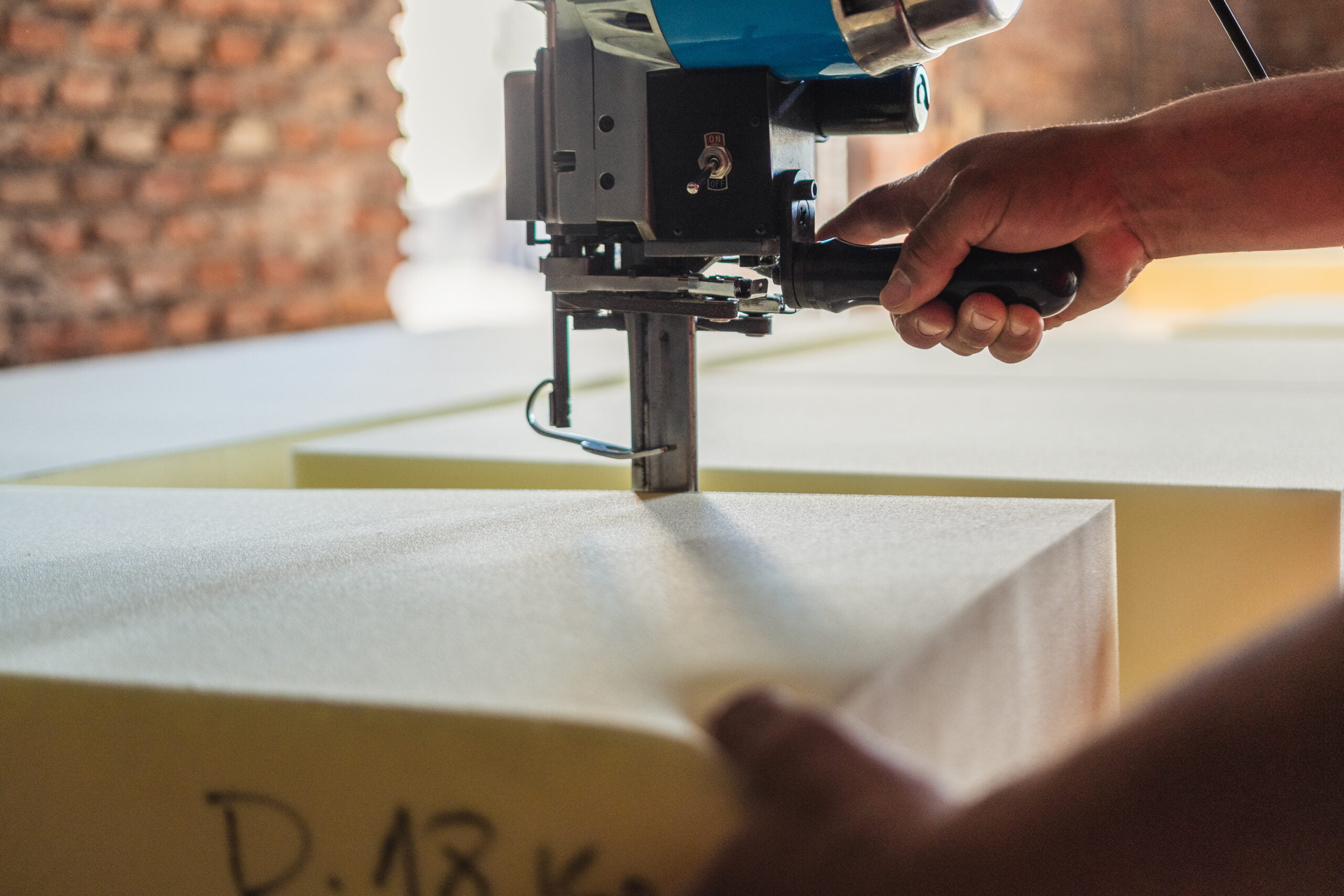If you’re wondering whether you can cut up a memory foam mattress for disposal, the answer is yes. It can help you save space, avoid disposal fees, and even recycle some materials. Here’s a comprehensive guide on how to do it efficiently.
Tools you’ll need
- Electric carving knife or serrated bread knife: These tools make cutting through the dense foam easier.
- Utility knife or hot wire cutter: Useful for more precise cuts.
- Tape measure and permanent marker: To mark your cutting lines accurately.
- Protective gear: Wear gloves and goggles to avoid injury.
Step-by-step guide
- Preparation:
- Safety first: Ensure you’re in a well-ventilated area and have your protective gear on.
- Flat surface: Lay the mattress on a flat, stable surface to keep it steady during cutting.
- Measure and mark: Use the tape measure and marker to outline where you will cut.
- Cutting the mattress:
- Initial cut: Start by cutting the fabric cover. A utility knife works best for this.
- Foam layers: Use the electric carving knife or serrated bread knife to cut through the foam layers. For a cleaner cut, use a hot wire cutter if available.
- Separate materials: As you cut, separate different materials like foam, fabric, and any metal springs or wooden parts for proper disposal or recycling.
- Disposal:
- Recycling: Check with local recycling centers to see if they accept memory foam.
- Landfill: If recycling isn’t an option, you can take the cut pieces to a local landfill.
- Donation: Consider donating usable parts to charities or animal shelters for bedding.
FAQ
Is it safe to cut a memory foam mattress? Yes, it’s generally safe as long as you use the right tools and follow safety guidelines. Always wear protective gear and ensure the mattress is stable while cutting.
How do you get rid of a memory foam mattress? Consider the following options:
- Drop-off at a local landfill: Many landfills accept old mattresses.
- Rent a dumpster: This can be a convenient option if you have a lot of waste.
- Waste disposal company: Contact local companies that specialize in mattress disposal.
- Store take-back programs: Some stores will take your old mattress when you buy a new one.
How to cut up a memory foam mattress?
- Choose the right tool: A sharp, serrated bread knife or an electric carving knife works best.
- Secure the mattress: Place it on a flat surface and, if possible, have someone help hold it steady.
- Make the cut: Follow your marked lines and cut through the foam layer by layer.
What to do with old memory foam? Here are some creative ways to reuse your old memory foam:
- Office chairs or car seats: Cut to fit and add comfort.
- Outdoor furniture: Use it for benches, deck chairs, or outdoor beds.
- Camping bed: A lightweight, portable option.
- Play mats: Ideal for kids’ play areas.
- Pet cushions: Create cozy beds for your pets.
- Dining chair cushions: Add comfort to your seating.
- Headboard padding: Use it to create a soft, upholstered headboard.
By following these steps and tips, you can effectively and safely cut up a memory foam mattress for disposal, ensuring you handle it in an eco-friendly way while potentially repurposing materials.

